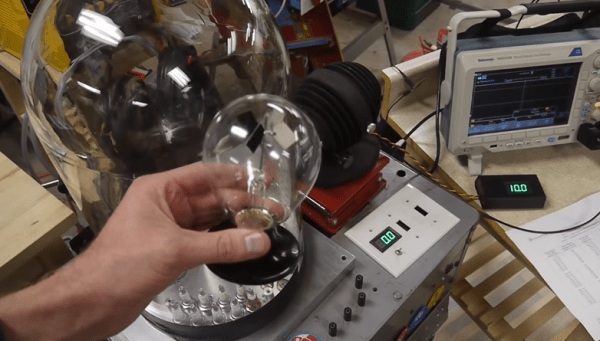It might be too soon to consider the innards of the old CRT monitor at the back of your closet to be something worth putting on display in your home or workshop. For that curio cabinet-worthy appeal, you need to look a bit further back. Say, about 150 years. Yes, that’ll do. A Crookes tube, the original electron beam-forming vacuum tube of glass, invented by Sir William Crookes et al. in the late 19th century, is what you need.
And a Crookes tube is what [Markus Bindhammer] found on AliExpress one day. He felt that piece of historic lab equipment was asking to be put on display in proper fashion. So he set to work crafting a wooden stand for it out of a repurposed candlestick, a nice piece of scrap oak, and some brass feet giving it that antique mad-scientist feel.
After connecting a high voltage generator and switch, the Crookes tube should have been all set, but nothing happened when it was powered up. It turned out that a capacitance issue was preventing the tube from springing to life. Wrapping the cathode end of the tube in aluminum foil, [Markus] formed what is effectively a Leyden jar, and that was the trick that kicked things into action.
As of this writing, there are no longer any Crookes tubes that we could find on AliExpress, so you’ll have to look elsewhere if you’re interested in showing off your own 19th century electron-streaming experiment. Check out the Crookes Radiometer for some more of Sir Williams Crookes’s science inside blown glass.
Continue reading “Foil Leyden Jar Helps Bring Crookes Tube To Life”












